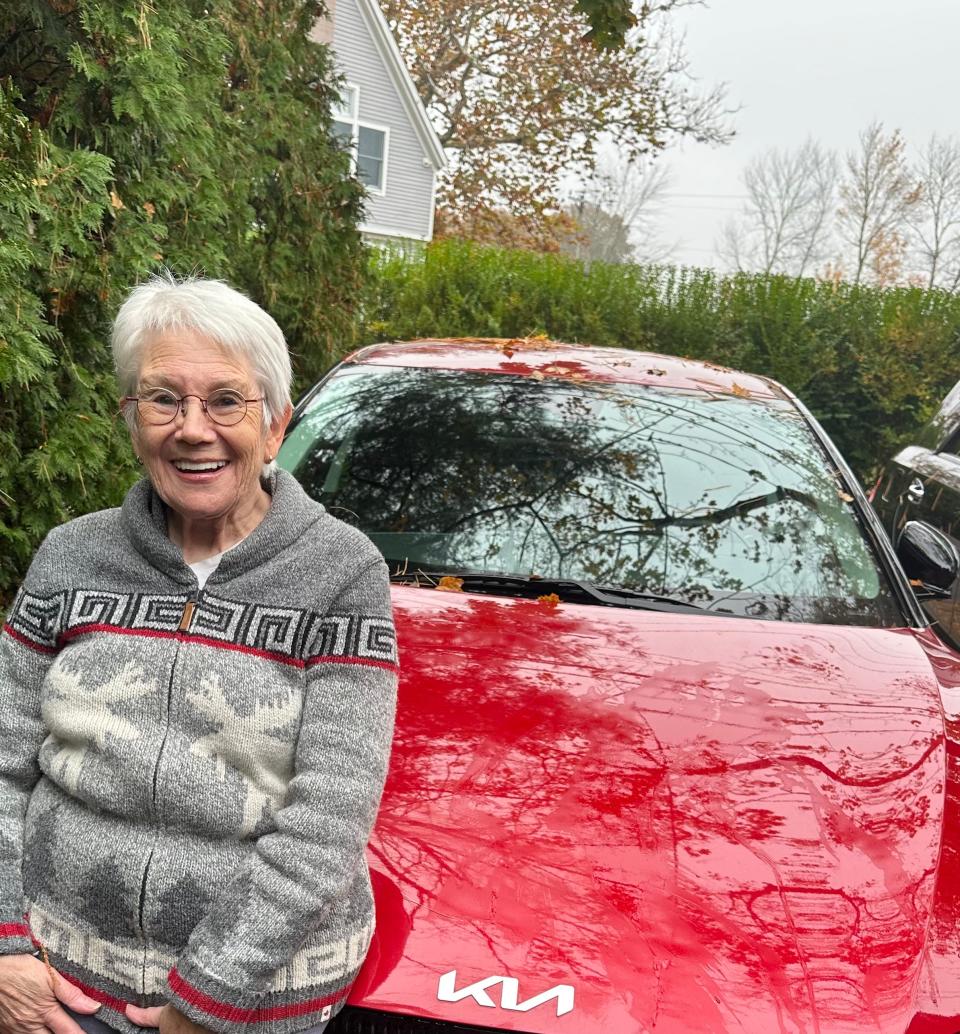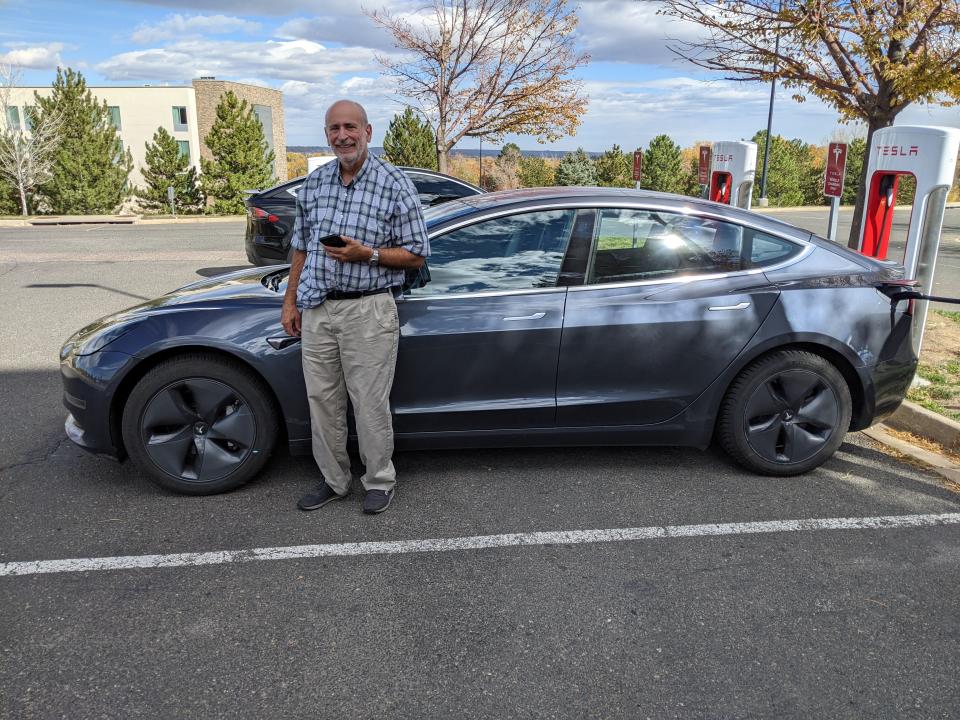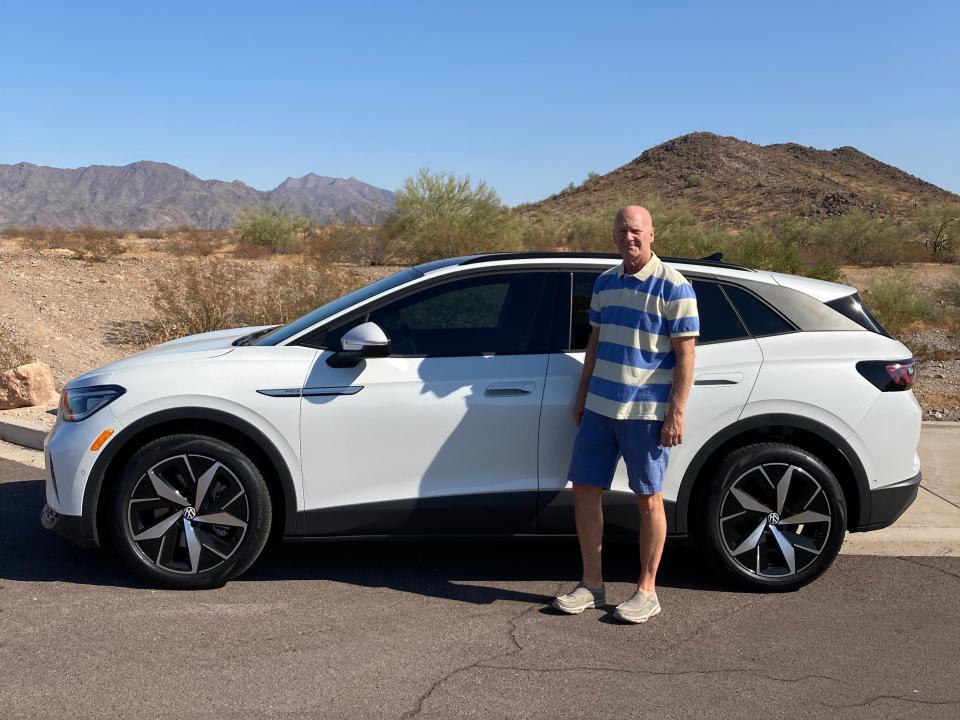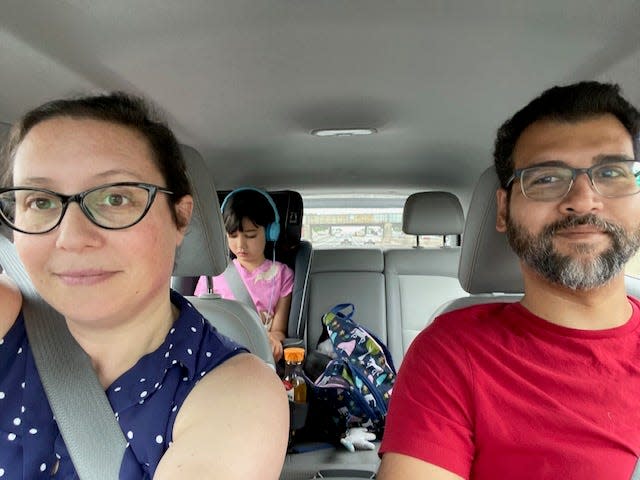Charging, road trips, maintenance, and more: 8 EV owners reveal the realities of going electric

Insider spoke with dozens of EV owners as plug-in cars are gaining traction.
We compiled the experiences of eight EV owners across the country.
From California to the East Coast and from Tesla owners to Ford owners, here's what they said.
We tracked down EV owners from across the country to hear exactly what it's like owning, charging, and even taking road trips in plug-in vehicles.
These interviews have been edited for length and clarity.
Charlotte Scot, 76 — Old Lyme, CT — Kia EV6

As I got older, I wanted to do something for the planet, and I certainly don't drive as much as I used to. So, what's more perfect for a senior than an electric vehicle?
My little BMW i3, named "Orangina," was adorable. I bought it when it was about a year old, in 2015. I would only have to charge maybe once a week, even with just a 100-mile range. It was small, it was capable, and it was how I could afford to get into electric vehicles back then. It really eased me into EVs. I learned pluses and minuses.
Technically, it held one gallon of gas, so it was — sort of — a hybrid.
I wanted more range, but I liked not having to go to the gas station. I installed a ChargePoint charger at home. The utility gave rebates, so I got my charger for practically nothing. Now, I don't think my home charging costs more than about $20 a month, and an office down the street from me also has free chargers. I never really looked at another gas engine.
Planning was a big thing to know — where you could get a charge if you needed it. I also bought an adapter so I could use Tesla chargers. I traded Orangina in for a Hyundai Kona EV about three years ago. It's a wonderful car, compact, with a range of about 250 miles, so it was quite a leap forward.
I'm not a fan of Elon Musk, so I never considered a Tesla. I leased the Kia EV6, named "Snazzy Radish," about five months ago, and Kia took about $7,500 off its price.
I have a bumper sticker on the back of the car that says, "I identify as an electric vehicle." I think I identify with it. It's like, "Hey, folks, you can do this. You don't have to buy a Tesla. You don't have to spend $100,000. There are vehicles that are available."
Rick Samuels, 71 — Portland, OR — Tesla Model 3

The Nissan Leaf was the first affordable, practical EV. We leased our first Leaf for three years in 2011. I was commuting about 30 miles a day, which was an ideal range for a first-generation Leaf. We then bought a 2-year-old, lease-returned 2013 Leaf.
In 2014, when the first lease ran out, Nissan was practically giving 2014 models away. It was $1,000 up-front and $100 a month for a two-year lease. At the end of the two years, in 2016, Nissan gave us another 12,000 miles and kept the payments the same. At the end of the third year, we ended up buying the Leaf for $9,200. We had the 2013 and the 2014 models for some time.
In early 2021, we wanted a car with more range, so we ended up leasing a 2020 Leaf SV Plus with about 200 miles of range. The lease price reflected federal and state tax credits, plus a factory incentive. We live in a floating home, but a nearby members' club allowed us to put Level 2 chargers in the parking lot.
Last fall, we took our first real road trip, and that's when we found out how abysmal public-charging infrastructure is.
The problem was finding chargers that worked without issues. At that point, we said, if we were going to drive an electric car, and we wanted to take trips, pretty much our only choice was a Tesla, so we bought a used Tesla Model 3 and sold one Leaf.
We have taken several trips in the Tesla and have never had a problem charging. We've had it for a year and have not had any significant problems with it. Our Leaf, which now has over 80,000 miles on it, has also never needed any significant repairs. We've only had to get the 12-volt batteries replaced.
I tell people that if it's going to be your main car for trips, the only electric car I would get right now is a Tesla. In two or three years, that may be different, but right now, their public-charging infrastructure is much better. You don't have to worry about a card reader not working or about a screen being vandalized.
We see no need to have a gasoline-powered car. And we hope we will never have to buy another gasoline-powered car.
Jim Selgo, 66 — Goodyear, AZ — Volkswagen ID.4

In February 2019, I was still working daily and driving about 50 miles round trip. I had an interest in electric cars and bought a new 2019 Nissan Leaf. My wife had a 100-mile round-trip drive two nights a week, so we also bought a new 2020 Chevrolet Bolt for her.
The Bolt looks small, but inside had plenty of room, and it got about 270 miles of range — while the Leaf only had about 170 — so that's why I decided to sell the Leaf two years ago and keep the Bolt.
Recently, I traded the Bolt in for the Volkswagen ID.4. I got the $7,500 tax credit, and it was listed at just under $52,000, but with discounts, I got it for less than $40,000. They're great to drive, the torque and the speed are awesome, and I really like regenerative, one-pedal braking.
When I was first shopping for an electric vehicle about four years ago, even the dealer didn't have a good understanding or knowledge of EVs, so I kind of went into it blind. Then I learned a lot about them, and really the only negative that we had then — and it's getting better — regards long-distance traveling and finding charging stations. When you purchase the Volkswagen, you get three years of charging at Electrify America — Volkswagen's nationwide charging subsidiary that it established in 2016 — so I could technically drive across the country and use their stations at no cost.
We also have sunshine most of the time here, so I put a solar rooftop on my house. It's been 36 consecutive months that I have not paid a dime for electricity or gasoline because I charge the Volkswagen at the house. I've never paid a dime for maintenance or repair, either. The only thing we have to take it in for is tire rotation, and that's done for free. I will not go back to a gas engine.
We are really happy we did this, and not just financially — they're nice cars, just powered differently.
Portia Zwicker, 43 — Schenectady County, NY — Chevrolet Bolt

My family has an overall goal of lowering our carbon footprint and weaning off all fossil fuels.

 Yahoo Autos
Yahoo Autos 